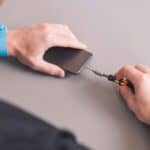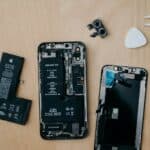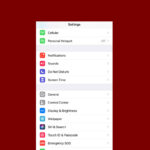Android File Transfer is a tool that allows users to move files between Android devices and computers. Many users encounter issues with this process. To fix Android File Transfer problems, ensure your device is in file transfer mode, check USB connections, and enable USB debugging if needed.
Common problems include unrecognized devices, transfer failures, and connection errors. These issues can affect various Android phones like Samsung Galaxy models when connecting to Windows PCs or Macs. Solving these problems often involves simple steps that users can perform themselves.
Several quick fixes can resolve most Android File Transfer issues. Updating USB drivers on your computer may help. Restarting both devices can also clear temporary glitches. For persistent problems, alternative file transfer methods exist, such as cloud storage or wireless transfer apps.
| Issue | Quick Fix |
|---|---|
| Device not recognized | Check USB cable and port |
| Transfer fails | Enable file transfer mode on Android |
| Connection error | Restart both devices |
| Software conflict | Update USB drivers on computer |
Troubleshooting Android File Transfer on Mac
Android File Transfer is a handy tool for moving files between your Android device and a Mac. But sometimes, it doesn’t work as expected. Let’s troubleshoot some common issues and get your files moving again.
Common Problems and Solutions
- Device not recognized: This is often caused by a faulty USB cable or port. Try a different cable and connect to a different USB port on your Mac. Also, ensure your Android device is unlocked and in “File Transfer” mode (sometimes called “MTP”).
- Android File Transfer not opening: Make sure you have the latest version of Android File Transfer installed. You can download it from the official Android website. If it’s already installed, try restarting both your Mac and Android device.
- Files not transferring or slow transfer speeds: Large files can take time. Ensure your device has enough storage space. If you’re transferring many files, try moving them in smaller batches. Sometimes, third-party security software can interfere with file transfers. Temporarily disable it to see if that helps.
- “Could not connect to device” error: This error can pop up if your Android device’s drivers are outdated or corrupted. Try reinstalling the drivers or updating your Android device’s software.
Tips for Smooth File Transfers
- Use a high-quality USB cable: A good cable ensures a stable connection.
- Update your devices: Keep both your Mac and Android device software updated for optimal compatibility.
- Check for debris in ports: Dust or debris in the USB ports can cause connection issues. Clean them carefully with compressed air.
- Consider alternatives: If Android File Transfer consistently gives you trouble, explore alternatives like cloud storage services (Google Drive, Dropbox) or wireless transfer apps.
Troubleshooting Table
| Problem | Solution |
|---|---|
| Device not recognized | Try a different USB cable/port, ensure the device is unlocked and in “File Transfer” mode. |
| Android File Transfer not opening | Download the latest version, restart your Mac and Android device. |
| Slow transfer speeds | Transfer files in smaller batches, disable security software temporarily. |
| “Could not connect to device” error | Reinstall drivers, update your Android device’s software. |
By following these tips, you can overcome common Android File Transfer issues and enjoy seamless file sharing between your devices.
Understanding Android File Transfer
Android File Transfer enables users to move files between Android devices and computers. This process involves USB connections and specific software requirements. Users may encounter compatibility issues or error messages during file transfers.
Compatibility and Requirements
Android File Transfer works with Mac OS X 10.5 or later and Android devices running Android 3.0 or higher. Users need a USB cable that supports data transfer. Some devices require enabling USB debugging in Developer Options.
File transfer mode must be selected on the Android device. This option appears in the notification panel when connected to a computer. Windows users can transfer files without additional software, while Mac users need to download Android File Transfer.
Devices should have sufficient storage space for transfers. Keeping Android OS updated helps ensure compatibility with transfer protocols.
Common Issues and Error Messages
Users may face several problems when attempting file transfers. A common issue is the “No Android device found” error. This can occur due to faulty USB cables, incorrect USB modes, or outdated device drivers.
Some users report being unable to access device storage. This often results from locked screens or disabled USB debugging. Updating USB drivers on the computer can resolve many connection problems.
Error messages like “USB device not recognized” may appear. Restarting both devices often fixes this. If issues persist, users should check for OS updates or try different USB ports.
| Issue | Possible Solution |
|---|---|
| No device found | Check USB cable, enable file transfer mode |
| Can’t access storage | Unlock device, enable USB debugging |
| USB not recognized | Restart devices, update drivers |
Troubleshooting Connection Problems
Android file transfer issues often stem from connection problems. These can be resolved by examining hardware components, updating software and drivers, and adjusting Android settings.
Checking Hardware Components
Start by inspecting your USB cable and ports. A damaged USB cable can prevent proper connection. Try using a different cable to rule out this issue.
Check the USB ports on both your Android device and computer. Dust or debris can interfere with the connection. Clean the ports gently with compressed air.
If problems persist, test your Android device with another computer. This helps determine if the issue lies with your device or the computer.
USB connection types can also affect file transfer. Use a USB 3.0 port if available for faster data transfer speeds.
Software and Driver Considerations
Outdated or corrupted drivers often cause file transfer problems. Update the USB drivers on your computer to ensure compatibility.
For Windows users, check Device Manager for any yellow exclamation marks next to USB devices. This indicates driver issues.
Mac users should ensure Android File Transfer is installed and up to date. Reboot your Mac if file transfer isn’t working.
Consider updating your Android device’s software. New updates can resolve compatibility issues with file transfer protocols.
Enabling Necessary Settings on Android
Enable USB debugging on your Android device to allow file transfer. Go to Settings > Developer Options > USB Debugging.
If Developer Options isn’t visible, activate it by tapping Build Number in About Phone several times.
Set the default USB configuration to File Transfer/MTP mode. This ensures your device is recognized for file transfer when connected.
| Setting | Location | Purpose |
|---|---|---|
| USB Debugging | Developer Options | Allows advanced USB functions |
| File Transfer Mode | USB Options | Sets default connection type |
| Developer Options | About Phone | Enables advanced settings |
Restart your Android device after changing these settings. This applies the new configurations and can resolve connection issues.
Step-by-Step Solutions
Fixing Android file transfer issues often requires methodical troubleshooting. These solutions target common problems and provide clear steps to resolve them.
Resolving Software Conflicts
Android File Transfer may conflict with other software. Users should check for interference from Samsung Kies or Smart Switch.
- Uninstall Samsung Kies or Smart Switch
- Restart the computer
- Try Android File Transfer again
If conflicts persist, users can try alternative file transfer methods. MobileTrans offers a user-friendly option for Mac users.
Steps to use MobileTrans:
- Install MobileTrans on Mac
- Connect Android device via USB
- Click “Phone Transfer” on MobileTrans home page
- Select files to transfer
This method bypasses Android File Transfer entirely, avoiding software conflicts.
Addressing USB and Connectivity Errors
USB connection issues often hinder file transfers. Users should systematically check each component.
- Try a different USB cable
- Use another USB port on the computer
- Enable USB debugging on Android device:
- Go to Settings > Developer Options
- Toggle on USB debugging
If the device isn’t recognized, users should:
- Update USB drivers on the computer
- Restart both devices
- Check for debris in the USB port
For persistent issues, users can attempt wireless transfer options like AirDroid or Google Drive.
Updating and Reinstalling Procedures
Outdated software often causes transfer problems. Users should ensure all components are up-to-date.
- Update Android OS:
- Settings > System > System update
- Update Android File Transfer on Mac
- Check for computer OS updates
If updates don’t resolve the issue, reinstallation may be necessary:
- Uninstall Android File Transfer
- Restart the computer
- Download the latest version from the official website
- Install and test
For stubborn problems, users can try third-party alternatives like Commander One or Handshaker. These offer additional features and may resolve compatibility issues.
Alternative Methods and Tools
Android users have several options beyond the standard Android File Transfer app. These alternatives offer improved functionality and ease of use for transferring files between devices.
Third-Party Transfer Software
DroidKit stands out as a top Android file transfer alternative. It enables quick one-click transfers of media files, personal data, and apps. AnyDroid is another powerful tool that supports a wide range of Android devices.
For Samsung smartphone users, Samsung Kies or Smart Switch provide tailored solutions. These apps offer seamless file transfers and device management features specific to Samsung devices.
OpenMTP serves as a user-friendly option for Mac users. It replaces the default Android File Transfer app with a more intuitive interface and improved transfer speeds.
| Software | Key Features | Compatibility |
|---|---|---|
| DroidKit | One-click transfers, Media/App support | All Android devices |
| AnyDroid | Wide device support, Backup options | Most Android phones |
| Samsung Kies/Smart Switch | Samsung-specific features | Samsung devices |
| OpenMTP | Mac-friendly, Improved interface | All Android on Mac |
Wireless Transfer Options
AirDroid offers a wireless solution for file transfers. It allows users to manage their Android device from a web browser, eliminating the need for USB cables.
Wi-Fi Direct is a built-in feature on many Android devices. It enables direct file transfers between compatible devices without an internet connection. This method is ideal for quick transfers of large files.
Cloud storage services like Google Drive or Dropbox provide another wireless option. Users can upload files from their Android device and access them on any other device with an internet connection.
WhatsApp also serves as a quick method for small file transfers. It allows sending documents, photos, and videos between smartphones easily.
Frequently Asked Questions
Android File Transfer issues can be frustrating. These common questions address key problems and solutions for seamless file transfers between Android devices and computers.
How can I troubleshoot the ‘could not connect to device’ error with Android File Transfer on Mac?
Check your USB cable for damage. Try a different cable if available. Restart both your Mac and Android device. Ensure your Android device is unlocked and set to file transfer mode. Update Android File Transfer on your Mac to the latest version.
What are the steps to resolve Android File Transfer not working on Mac?
Enable USB debugging on your Android device. Go to Settings > Developer options. Install the latest Android File Transfer software. Disable antivirus software temporarily. Try alternative file transfer methods like cloud services or third-party apps.
Where can I find a reliable download for Android File Transfer?
Visit the official Android website. Look for the “Android File Transfer” section. Download the software directly from this trusted source. Avoid third-party websites to prevent malware risks.
What are some alternative software solutions for transferring files from Android to PC?
Dr. Fone and AnyDroid offer comprehensive file management features. OpenMTP is a free, open-source option for tech-savvy users. Cloud services like Google Drive provide wireless transfer capabilities.
How do I repair a corrupted Android File Transfer installation on my computer?
Uninstall the existing Android File Transfer application. Restart your computer. Download a fresh copy from the official Android website. Install the new version. Restart your computer again before using.
What are the reasons for data transfer issues between a PC and an Android device?
Outdated device drivers can cause connection problems. Incorrect USB connection modes may prevent file transfers. Software conflicts with antivirus programs can block transfers. Damaged USB cables or ports may disrupt connections.
| Issue | Quick Fix |
|---|---|
| Connection Error | Check USB cable |
| Transfer Not Working | Enable USB debugging |
| Corrupted Software | Reinstall Android File Transfer |
| PC-Android Transfer Issues | Update device drivers |





